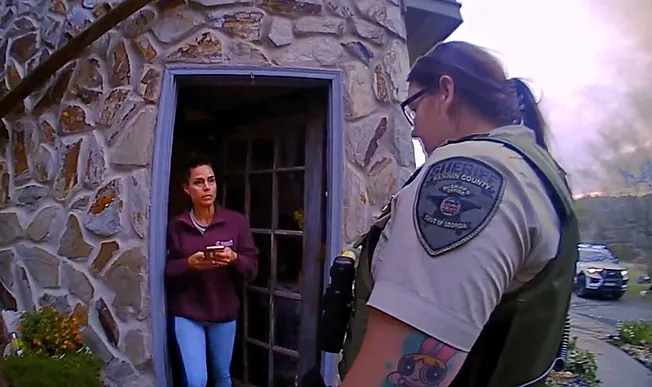Since it began publishing in 2021, under the editorship of Bret Stephens, “SAPIR: A quarterly journal of ideas for a thriving Jewish future” has been essential reading—and never more so than today, in our post–October 7 world. While we are far from the end of the war between Israel and Hamas, we wanted to bring you an essay recently published in SAPIR by Michael Oren. In it, the former Israeli ambassador to the U.S. imagines what a postwar world might look like and how we get there. —BW
This war doesn’t end with an iconic photo of desert fighters gathered around a makeshift flagpole in Eilat and hoisting a hand-painted Israeli pennant. This war doesn’t end with paratroopers gazing heavenward at the Kotel, or with their commander announcing, “The Temple Mount is in our hands.” This war doesn’t end in black and white but in lurid color as hollow-eyed reservists return home to their families, their careers, and their enduring nightmares. It ends with parents, siblings, wives, and lovers weeping, and with the shouts of bitter reckoning in the streets. And finally, hopefully, the Israel-Hamas war ends with something resembling peace.
That outcome is far from guaranteed. After more than a month in combat, the Israel Defense Forces (IDF) are far from realizing their objective of destroying Hamas. Much of Gaza has yet to be cleared of the terrorists, some 25,000 of whom are reportedly still alive and battle-ready. Beneath the Strip, an estimated 300 miles of tunnels — booby-trapped and mined — wait.
Meanwhile, multiple clocks are running. There is the clock of ammunition, certain stocks of which are already depleted, and the need to preserve sufficient reserves for a possible second front with Hezbollah. There is the humanitarian-disaster clock of the more than 1 million Palestinian refugees who, at Israel’s urging, fled to the southern part of Gaza, who are now exposed to the privations of winter and serving as shields for the terrorists hiding among them. There is the clock of a White House laboring under mounting pressure to mediate further cease-fires and hostage exchanges and that, in turn, pressures Israeli leaders to accept them. There is the financial clock of an Israeli economy: shorn of tourism and almost all foreign investment, it cannot keep hundreds of thousands of some of its most productive citizens indefinitely mobilized.
The IDF can beat those clocks by advancing swiftly yet surgically while reducing as much as possible the casualties on both the Israeli and Palestinian sides. Israel can ultimately achieve its goal. The process, however, is likely to stretch over many months, perhaps even a year. And while the world will press its demands, what, if anything, is Israel’s endgame?
The same question is being posed by many Israelis, few of whom want to reoccupy Gaza permanently. They, too, want to know how, apart from defeating Hamas, Israel defines victory. What, they ask, does the day after look like?
That day begins, first, with Gaza’s demilitarization. No more rockets, rocket factories, or underground arsenals. All the weaponry in the hands of Hamas and Palestinian Islamic Jihad must be confiscated and destroyed. The entire tunnel system, all 300 miles of it, must be sealed, cracked, and buried. Gaza must never again serve as a launching pad for any projectile of any caliber at the people of Israel.
Concurrently with demilitarization, Gaza must also be separated from Israel by a cordon sanitaire of between one and two kilometers in depth. Apart from IDF patrols, no one will be allowed to enter this no-man’s-land. No one, certainly, will be able to approach the border.
To stem the smuggling of further armaments into Gaza, the IDF will resume its former positions along the Philadelphi line on the Egyptian border. Israel will retain broad security control over Gaza, including its airspace and radio frequencies, and reserve the right of hot pursuit against reactivated terrorist cells.
Next, Gaza must be internationalized. It must no longer be an Israeli problem or even an Israeli-Egyptian problem, but the responsibility of the international community, above all the United States. The fact that two U.S. carrier strike forces are currently in the Middle East is proof that Gaza threatens not only its immediate neighbors but also the entire region and possibly the world.
Accordingly, the United States must enlist other nations — Egypt, Jordan, Saudi Arabia, and the Abraham Accords countries especially — to help demilitarize Gaza and supervise its reconstruction.
The international force will oversee the building of a modern infrastructure for Gaza — transportation systems, water desalination and waste treatment plants, and electrical grids — along with state-of-the-art hospitals and healthcare centers. It will remove the United Nations Relief and Works Agency for Palestine Refugees in the Near East (UNRWA) institutions and Hamas summer camps that taught Palestinian children to glorify terror; in their place will be schools that educate them for peace. The refugee camps will be disbanded and replaced by new neighborhoods complete with parks and commercial centers. A harbor and an airport will be opened. The farmlands that, prior to Israel’s disengagement from Gaza in 2005, exported organic vegetables to the world, will be revived. Gazans must be offered a quality of life totally unthinkable under Hamas.
To ease Gaza’s endemic congestion, some have suggested that the Egyptian government might be incentivized to resettle large numbers of Gazans in the northern Sinai Peninsula. This would indeed be a positive development, though one that Egypt is unlikely to approve. Cairo has long opposed the notion of repatriating even one Palestinian on its soil. Nevertheless, such a solution can still be pursued, and financial offers submitted to the Egyptians.
Completing all these day-after tasks will no doubt prove challenging, yet none will be more onerous than establishing a benign and responsible Palestinian leadership. The Biden administration has already expressed its interest in reestablishing Palestinian Authority control over the Strip. The Israeli government has cautiously concurred but with the caveat that the PA must first extensively be reformed. Certainly, the 88-year-old Mahmoud Abbas, a deeply corrupt and antisemitic autocrat who has accused the IDF of perpetrating the massacres of October 7, and who, fearing a Hamas victory, is now in the eighteenth year of his four-year term, can hardly be reformed.
The PA, it must be recalled, took over control of Gaza after Israel’s disengagement. PA police were richly funded and trained by the United States only to be overthrown by Hamas two years later. There are compelling reasons to seek an alternative leadership to the PA, one that is native to Gaza and invested in its welfare. Such a leadership would have the option to federate with the West Bank and participate in a future two-state solution.
Such an outcome remains very much in the future, though. The Palestinians will first have to accept America’s formula of “two states for two peoples” — they still refuse to recognize the Jews as a people — and to commit to abjuring any further claims against Israel. A democratic Palestinian government, subject to its own laws, must emerge. Only then can a treaty much like the Peace to Prosperity plan proposed in 2020 — involving massive investment in the West Bank and Gaza, Palestinian independence, and territorial swaps with Israel — be negotiated. Only then will the trauma and agony of this war become bearable. The attainment of security and peace will help justify the vast sacrifices Israelis have made. Only then will October 7 indeed have a day after, and many hopeful days after that.
Michael Oren, formerly Israel’s ambassador to the United States, Knesset member, and deputy minister for diplomacy in the Israeli prime minister’s office, is the author of the Substack publication Clarity.
Become a Free Press subscriber today:











our Comments
Use common sense here: disagree, debate, but don't be a .